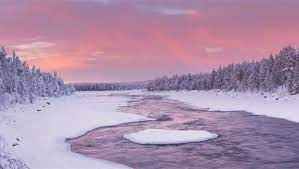Venus
"Venus: The Hottest Planet in Our Solar System"
Venus is the second planet from the Sun and is often referred to as Earth's "sister planet" due to their similar size and composition. Here are some key points about Venus:
Size and Composition: Venus has a diameter of about 12,104 kilometers (7,521 miles), making it slightly smaller than Earth. It has a rocky surface and is primarily composed of silicate rock and metal. Its atmosphere is mostly carbon dioxide (about 96%) with traces of nitrogen and other gases.
Atmosphere: Venus has a thick and dense atmosphere that creates a runaway greenhouse effect, making it the hottest planet in our solar system. The atmospheric pressure on Venus is about 92 times greater than Earth's, equivalent to being submerged 900 meters (3,000 feet) underwater.

Venus is the second planet from the Sun and is often referred to as Earth's "sister planet" due to their similar size and composition. Here are some key points about Venus:
Size and Composition: Venus has a diameter of about 12,104 kilometers (7,521 miles), making it slightly smaller than Earth. It has a rocky surface and is primarily composed of silicate rock and metal. Its atmosphere is mostly carbon dioxide (about 96%) with traces of nitrogen and other gases.
Atmosphere: Venus has a thick and dense atmosphere that creates a runaway greenhouse effect, making it the hottest planet in our solar system. The atmospheric pressure on Venus is about 92 times greater than Earth's, equivalent to being submerged 900 meters (3,000 feet) underwater.

Surface Conditions: The surface of Venus is inhospitable with extreme temperatures averaging around 462 degrees Celsius (864 degrees Fahrenheit), which is hotter than the surface of Mercury despite Venus being further from the Sun. The atmospheric pressure and heat create a hostile environment where the air is thick and clouds of sulfuric acid dominate the skies.
Rotation and Orbit: Venus rotates on its axis very slowly, taking about 243 Earth days to complete one rotation. It orbits the Sun every 225 Earth days, following a nearly circular path. Interestingly, Venus has a retrograde rotation, meaning it spins in the opposite direction to most other planets.
Exploration: Venus has been studied extensively by space probes and telescopes. The first spacecraft to successfully land on Venus was the Soviet Union's Venera 7 in 1970. Since then, several other missions, including the Venera and Pioneer programs, as well as NASA's Magellan and ESA's Venus Express, have provided valuable information about Venus's atmosphere and surface.
Possibility of Life: Venus is considered a hostile environment for life as we know it due to its extreme temperatures, high atmospheric pressure, and acidic clouds. However, some scientists speculate that microbial life could potentially exist in the upper cloud layers where temperatures and pressures are more moderate.
Transit of Venus: One notable astronomical event associated with Venus is the transit of Venus. It occurs when Venus passes directly between the Earth and the Sun, appearing as a small, black dot crossing the face of the Sun. Transits of Venus are rare and occur in pairs separated by eight years, with more than a century between each pair.
Please note that scientific understanding and discoveries about Venus are continuously evolving as new research and missions take place.
Rotation and Orbit: Venus rotates on its axis very slowly, taking about 243 Earth days to complete one rotation. It orbits the Sun every 225 Earth days, following a nearly circular path. Interestingly, Venus has a retrograde rotation, meaning it spins in the opposite direction to most other planets.
Exploration: Venus has been studied extensively by space probes and telescopes. The first spacecraft to successfully land on Venus was the Soviet Union's Venera 7 in 1970. Since then, several other missions, including the Venera and Pioneer programs, as well as NASA's Magellan and ESA's Venus Express, have provided valuable information about Venus's atmosphere and surface.
Possibility of Life: Venus is considered a hostile environment for life as we know it due to its extreme temperatures, high atmospheric pressure, and acidic clouds. However, some scientists speculate that microbial life could potentially exist in the upper cloud layers where temperatures and pressures are more moderate.
Transit of Venus: One notable astronomical event associated with Venus is the transit of Venus. It occurs when Venus passes directly between the Earth and the Sun, appearing as a small, black dot crossing the face of the Sun. Transits of Venus are rare and occur in pairs separated by eight years, with more than a century between each pair.
Please note that scientific understanding and discoveries about Venus are continuously evolving as new research and missions take place.
#Venus
#PlanetVenus
#VenusFacts
#VenusExploration
#VenusianAtmosphere
#VenusSurface
#VenusMission
#VenusianClouds
#VenusTransit
#VenusLove
#VenusianBeauty
#VenusianSkies
#VenusObserved
#VenusScience
#VenusianLife
#PlanetVenus
#VenusFacts
#VenusExploration
#VenusianAtmosphere
#VenusSurface
#VenusMission
#VenusianClouds
#VenusTransit
#VenusLove
#VenusianBeauty
#VenusianSkies
#VenusObserved
#VenusScience
#VenusianLife
Facebook: https://www.facebook.com/profile.phpid=100087106114908
Twitter : https://twitter.com/bestpaperaward
Pinterest : https://in.pinterest.com/bestpaperaward
Linkedin : https://www.linkedin.com/in/esha-gupta-18b2b4245
Instagram: https://www.instagram.com/eshagupta__2022/
Twitter : https://twitter.com/bestpaperaward
Pinterest : https://in.pinterest.com/bestpaperaward
Linkedin : https://www.linkedin.com/in/esha-gupta-18b2b4245
Instagram: https://www.instagram.com/eshagupta__2022/



Comments
Post a Comment